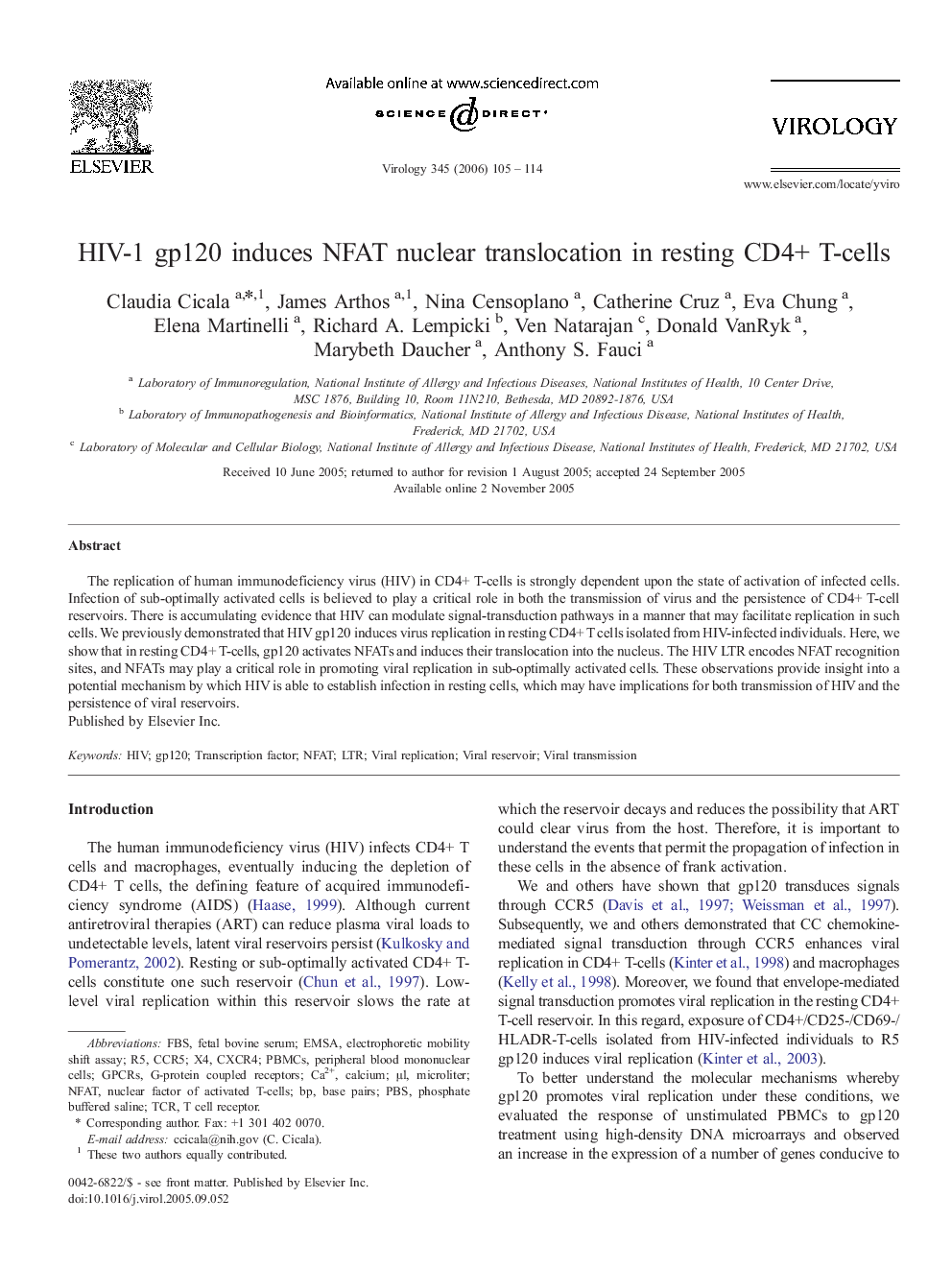| Article ID | Journal | Published Year | Pages | File Type |
|---|---|---|---|---|
| 3427444 | Virology | 2006 | 10 Pages |
The replication of human immunodeficiency virus (HIV) in CD4+ T-cells is strongly dependent upon the state of activation of infected cells. Infection of sub-optimally activated cells is believed to play a critical role in both the transmission of virus and the persistence of CD4+ T-cell reservoirs. There is accumulating evidence that HIV can modulate signal-transduction pathways in a manner that may facilitate replication in such cells. We previously demonstrated that HIV gp120 induces virus replication in resting CD4+ T cells isolated from HIV-infected individuals. Here, we show that in resting CD4+ T-cells, gp120 activates NFATs and induces their translocation into the nucleus. The HIV LTR encodes NFAT recognition sites, and NFATs may play a critical role in promoting viral replication in sub-optimally activated cells. These observations provide insight into a potential mechanism by which HIV is able to establish infection in resting cells, which may have implications for both transmission of HIV and the persistence of viral reservoirs.
